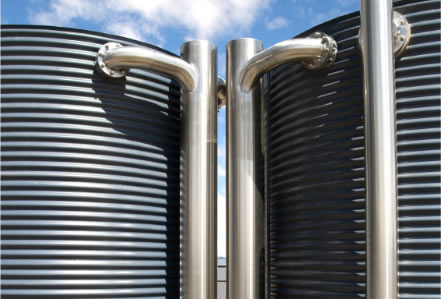
Supporting vibrating wire sensors the dataTaker DT85G GeoLogger is ideal for all geotechnical data logging applications. The dataTaker GeoLoggers have built-in vibrating wire support providing ideal data acquisition and monitoring solution for the engineer working in the geotechnical environment. The low cost, low power dataTaker DT85G is extremely versatile and easy to configure for communications, data capture and data analysis. View the data in real time or store up to 10 million data points. Data storage and retrieval can be achieved via USB memory stick, FTP, cell phone, Modbus for SCADA, Ethernet or Web.
The dataTaker GeoLoggers can monitor a wide variety of geotechnical datalogging applications including slope stability, subsidence, dam wall monitoring, tunnel and mining excavation, ground water, tunnel wall monitoring and site assessment.
The dataTaker DT85G has 16 analog channels capable of measuring up to 16 vibrating wire strain gauges with thermistors or 48 vibrating wire strain gauges without thermistors. If additional channels are required the DT85G and DT85G can be expanded simply by connecting dataTaker Channel Expansion Modules (CEM20) to provide 300 to 900 vibrating wire channels with thermistors. The advanced dataTaker DT85G range Geologgers are compatible with all major brands of geotechnical instrumentation including Slope Indicator, RST Instruments, Geokon, Soil Instruments, Roctest, AGI - Applied Geomechanics Inc. Manage a variety of sensors or devices using the Sensor Power options via dedicated power output, digital outputs or the latching relay configurations.
Store up to 10 million data points in user defined memory, log as much or as little as you need with independent control of schedule size and mode. Overwrite or stop logging once allocated memory is full. Archive data on alarm event, copy to USB memory or transfer via FTP, the choice is yours. Communications features include RS232 with modem support, USB, Ethernet and USB memory stick ports. Connect to the DT80 locally, remotely or over the Internet. The web interface allows users to configure the DT85G, access logged data and see current measurements as mimics or in a list using a web browser. FTP provides data to your office over the internet or mobile phone network, without the need for polling or specific host software.
| Max Sampling rate (Hz) | 40 |
| Analog Inputs | 48 (2-wire common reference) 32 (2-wire isolated) 16 (3 and 4-wire isolated) |
| Analog Input Range | Voltage: ±30m,300m,3000m,50000mVDC Current: ±30mA Resistance: 1MΩ Frequency: 450kHz |
| Analog Voltage Accuracy | ±0.15 of Reading + (Full Scale Reading * 0.01%) |
| Effective Resolution | 18 bits |
| Analog Outputs | 1 |
| Analog Out Range | Voltage: 10m-10000mVDC Current: 0-24mA |
| Excitation | Analog Channel: selectable 2µA, 250µA or 2.5mA precision current source, 4.5V voltage source or switched external supply Switchable 12V/5 regulated power output (max 300mA) |
| Digital IO | 8 bi-directional channels |
| Counter | Low speed counters: 8 counters shared with digital inputs Dedicated counters: 4 high speed or 2 phase encoder |
| RS232/RS422/RS485 serial sensor port | 1 |
| RS232 host port | 1 |
| USB Port | 1 |
| Ethernet Port | 1 |
| Data Storage | 128MB (upgradeable to 2GB) |
| Vibrating Wire supported | Yes |
| Protocols Supported | Modbus, FTP, HTTP, XML, SMTP, NTP and SDI-12 |
| CEM20 Expansion Module supported | Yes |
| Power Requirements | 10-30 VDC |
| Internal Battery | 6Vdc 1.2Ah Lead Acid |
| Real Time Clock Accuracy | ± 1 min/year (0°C to 40°C) ± 4 min/year (–40°C to 70°C) |
| Integrated WIFI | No |
| Dimensions(mm) | 180x137x65 |
| Weight | 1.5kg |
| Temperature Range | –45°C to 70°C |
| Warranty | 3 years |

Our client – a major research organization – had a project where they were to compare the effects of various surfacing materials on a series of tanks and how efficient these surfaces were in reducing temperature losses. The temperature in the tanks was to be cycled up to 60°C by internal steam coils and allowed to cool. The temperatures were to be logged at all times with sensors at various depths within the tanks. Data collection needed to be simple, but remote communications were unnecessary…
Read More
In the surrounds of the city of Guangzhou, a spell of cold weather poetically named the cold winds, threaten to slash the yields from the second rice crop of the season by 50%. These conditions frequently occur within the months of September and October. Rice breeders at the Guangdong Academy of Agricultural Science aim to develop new rice varieties that can withstand and thrive in the cold dew winds. Apart from records of average daily temperature, they lacked precise information on the severity of the conditions which the new varieties have to endure. The lack of data severely hampers the development of the new rice varieties. A monitoring solution was therefore required to further this research…
Read More
